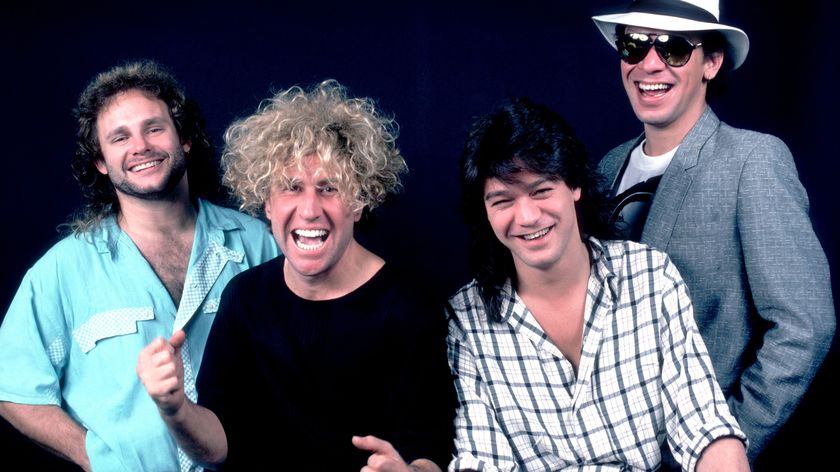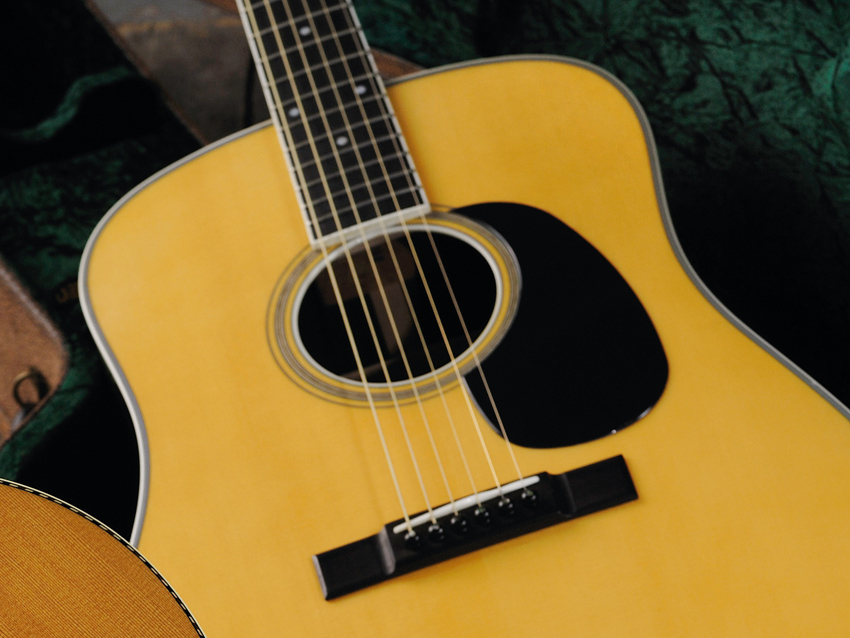MusicRadar Verdict
A beautifully built, voluminous dreadnought that's sure to get better with age.
Pros
- +
Build quality. Looks. Whopping output.
Cons
- -
Lack of tonal charisma.
MusicRadar's got your back

Larson Bros Stetson Style 2

Larson Bros Stetson Style 2

Larson Bros Stetson Style 2
The Larson Bros name might be unfamiliar, but it has real pedigree, even if the company itself is gone and the name is all that remains.
The originals were all US-made, but the Stetson Style 2 is from the Standard Series, which is built-in Vietnam.
"Whichever angle it's viewed from, the Stetson gives evidence of a high standard of craftsmanship."
First impressions are good. It's understated and simple in appearance, sporting little from the bling cupboard. It comes with a faux-suede, three-clasp (one lockable), deluxe hard case fitted internally with plush green crushed-velvet lining.
It's worth noting before we continue that Larson guitars don't come with any onboard electronics, but systems can be easily retro-fitted and the company recommends using Headway pickups.
Build
The Larson Stetson comes in two styles: Style 1 features a mahogany back and sides, while Style 2 (our review model) has Indian rosewood back and sides.
The tonewood selections are excellent. A solid spruce soundboard has a buttery hue to it and has been cut to produce a slightly quilted look. The spruce's grain is ruler-straight, though not that pronounced. Likewise, the rosewood back and sides are cut from a rich, dark selection with a distinct grain.
A simple and uncomplicated four-piece purfling edges the top, which has been continued to the centre of the back to serve as a tasteful divider. Both sides of the body are bound, as is the ebony fingerboard.
A simple soundhole rosette transfer surrounds a strip of matching binding fitted to the inside edge of the soundhole. The decorative aspects of this guitar are subdued, but well executed.
That said, the rectangular ebony bridge is a little staid - we'd prefer something with a little more shape and style.
The bound headstock is rosewood faced and contains an abalone Larson Bros logo. It's difficult not to notice the headstock's similarity to the Martin shape. In fact, put the two side-by-side and the dimensions are virtually identical. But early Larson models had the same headstock as today's models, so it could be argued that it's simply re-using the brand's design.
The one- piece mahogany neck is a medium 'C' profile and we find it comfortable for all manner of disciplines.
With instrument in hand, the bow to the top and back of the guitar is particularly noticeable and gives it a more defined belly below the bridge. This parabolic design was pioneered by Larson Bros and offers improved structural integrity, as both the back and front of the guitar are constructed under tension.
Regular flatter top acoustics can, over time, 'sink' or bow due to dehydration, these days commonly caused by the dehumidifying effects of central heating systems. This deforming results in an unbalanced tone.
The Larsons' design seeks to overcome this, while at the same time increase volume and projection. The additional tension placed on the guitar's top requires a stronger form of bracing.
The early 1900s saw the Larsons come up with what was a new concept for bracing: laminated struts. Today's models feature this same reinforced bracing - a laminate of Indian rosewood 'sandwiched' between European spruce.
It's claimed that, once fitted with laminated bracing, the guitar's top and back never moves. Larson also claims that this stronger bracing facilitates a faster response, a tighter bass and greater separation of individual string tones.
Whichever angle it's viewed from, the Stetson gives evidence of a high standard of craftsmanship. Every joint is clean and tight, and the guitar's simple yet classic looks will no doubt appeal to many.
We'd suggest that this Larson manages to bridge the gap between feeling strong enough for heavy use while not being over-engineered or overweight.
Sounds
Two words sum up the output of this guitar - volume and sustain. A few simple first- position chords open the taps to what is an acoustic powerhouse.
Played against virtually any other dreadnought we could lay our hands on, the Larson is louder and as such it breathes new life into chord work.
Sustain, too, comes in abundance, with single notes and chords decaying slower than other similarly priced dreadnoughts.
Tonally, the Stetson is best described as clear. As claimed, there is indeed good note separation and the tonal clarity can be found across a range of playing styles.
Perhaps where the Stetson scores points for clarity and volume it loses some on charisma and character. No doubt as the guitar 'beds in' and the tonewoods mature and open up, the full voice of this guitar will become apparent.
Some have argued that today's Larson Bros guitars are too different to be considered true reproductions of the highly esteemed pre-war models. Body sizes have been tweaked, the bracing position has been changed, bridges have been moved forward, and so on.
We're not convinced that the stated aim of producing an old sound from a new guitar has been achieved, but in truth, that's practically impossible. So rather than focusing on what this isn't, we'd suggest you focus on what this is: a fine guitar made with quality materials to excellent build standards.
For this reason alone, it should be seen as a credible alternative to the equivalently priced Martins and Blueridges of today.
Steve Harvey is senior content producer for Pro Sound News and also contributes to other Future brands. He has worked in the pro audio industry — as a touring musician as well as in live production, installed sound, and equipment sales and marketing — since November 1980.

“Instead of pairing a new booster inside this new pedal, think of it as changing lanes inside the pedal”: Mythos and That Pedal Show team up for the Argo Boost Deluxe – an octave fuzz with a switchable boost

“I didn’t even realise it had synthesizer on it for decades”: This deep dive into The Beatles' Here Comes The Sun reveals 4 Moog Modular parts that we’d never even noticed before

“I saw people in the audience holding up these banners: ‘SAMMY SUCKS!' 'WE WANT DAVE!’”: How Sammy Hagar and Van Halen won their war with David Lee Roth










